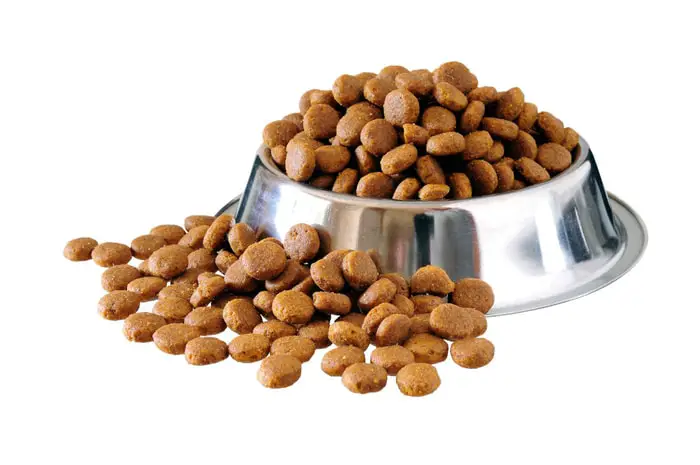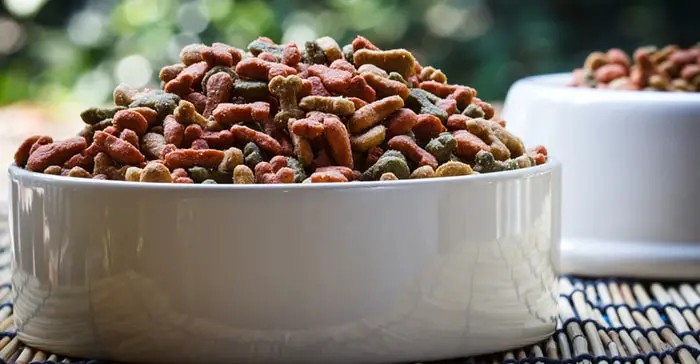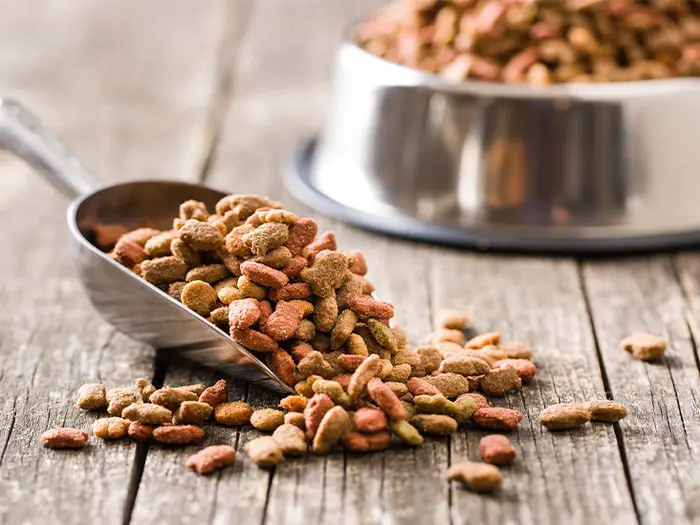Dog food for weight loss is an essential factor during the weight loss program. Your pet should be weighed once each week, and a record or graph of weight loss should be kept. If possible, follow-up veterinarian visits should be made every 2 to 3 weeks to record progress. You should use portion-controlled feeding, even if a commercially prepared, reducing diet is fed. Portion-controlled feeding allows strict monitoring of your pet’s total food intake.
Best Dog Food For Weight Loss
A weight-loss diet removes the pet’s opportunity to increase its intake of reduced-energy food spontaneously and may also be helpful to feed several small meals per day rather than one or two large meals. Once the optimum weight has been reached, the daily volume of food can be slowly increased until an amount that maintains the ideal body weight is provided.

Dietary Management: Types of Foods for Weight Loss
The preferred diet management methods for slightly overweight dogs are regular exercise and motivation. You should regularly feed your pets table scraps and many treats. When this is the case, simply eliminating all of the extra tidbits and restricting the dog’s intake to 70% to 90% of its body weight requirement may lead to adequate weight loss.
Commercial pet foods formulated for adult maintenance contain adequate amounts of protein, fat, vitamins, and minerals to meet the needs of an animal at the average weight that is consuming adequate calories. If the volume of a maintenance diet is reduced too drastically to limit calories, nutrient deficiencies may develop.

Commercially prepared foods with reduced energy densities are formulated to contain adequate nutrients while supplying fewer calories. In moderate to severe obesity cases or when you are not strongly motivated to change your habits, a change of diet to a commercially prepared food with a reduced energy density is recommended for weight reduction.
Dog Food For Weight Loss: Dietary Fat
The most efficient way to reduce the energy density of a food is to reduce its proportion of fat. On a weight basis, fat provides more than twice the calories of carbohydrate or protein and is also highly palatable to your dogs. Therefore decreasing the fat content of a pet food reduces the food’s caloric density and may also slightly decrease palatability. The types of fat included in the food are also an important consideration.

Protein in Dog Food
Studies have shown that increasing protein in weight-loss diets improves body composition in your dog. Increased body fat is lost while loss of lean body tissue is minimized. The protein level in reducing diets is an essential consideration for dogs to ensure adequate essential amino acids are provided as the pet is fed restricted calories.
Carbohydrates for Dog Diet
When reduced energy foods are prepared for weight loss, fat can be replaced by protein, and digestible carbohydrates can replace a part. Carbohydrate has less than half of the metabolic calories density of fat and, similar to protein, produces a higher dietary thermogenic response than fat. Your overweight dogs are glucose intolerant; carbohydrates that contribute to a relatively slow increase in blood glucose levels and modulate insulin response are the best choice.
Fiber An Important Part of Dog Diet
An alternative way that the caloric density of a diet can be decreased is by diluting calories by adding indigestible fiber. The rationale is that in addition to reducing the food’s caloric density, the increased bulk will contribute to satiety and decrease voluntary energy consumption.
Dog Food For Weight Loss: L-Carnitine
L-carnitine is essential for the metabolism of fatty acids for energy; a deficiency results in reduced fat for energy and affects fat metabolism and energy production in the body. There is also evidence that supplemental carnitine enhances overall weight loss and body fat reductions in overweight dogs.
Feeding Regimen of Dog
When any reduced-caloric food is used for weight loss in dogs, you should always use portion-controlled feeding. The advantage of feeding a reduced diet is that fewer calories can be consumed in a larger volume of food, and there is less risk of causing a nutrient imbalance during restricted feeding of the diet. Most dogs, given the opportunity, merely increase the volume of food that they eat to keep energy intake the same.
Maintaining Weight Loss in Dogs
The dietary and exercise habits established during the treatment of obesity must be maintained for your dogs even after caloric restriction for weight loss has ended. You should avoid reverting to old habits such as feeding table scraps, providing many treats, or allowing begging behaviors. Your pet should be fed a well-balanced, complete food designed for adult maintenance, and you should continue with the level of daily exercise included in the weight loss program.
Some pets can be fed regular adult maintenance food once they have reached ideal body weight. However, others quickly gain weight when fed these foods. A reduced-caloric food formulated for less-active adult pets is appropriate for weight maintenance in most animals following successful weight loss. In all cases, portion-controlled feeding two or more times per day is the feeding schedule that should be used.